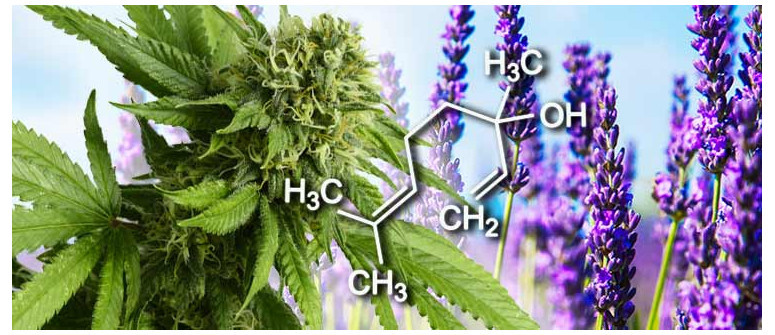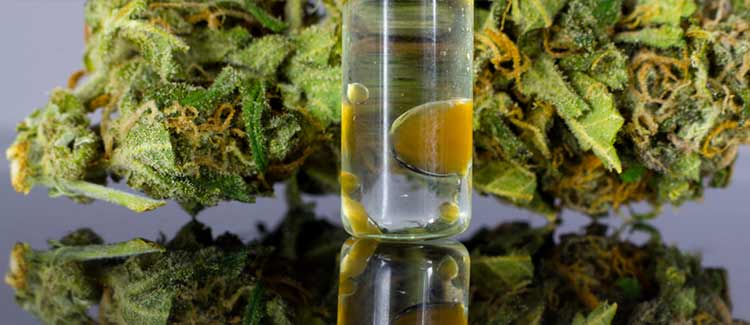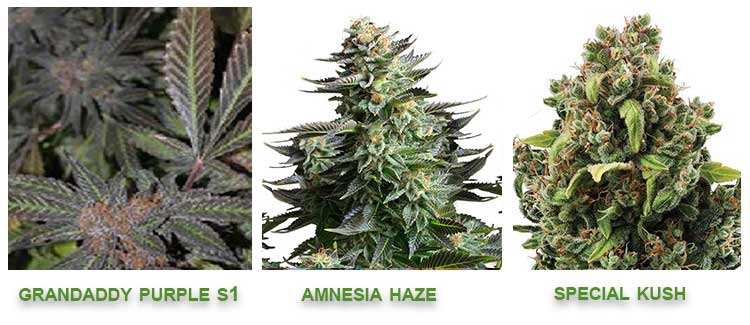Terpene profile: linalool

Linalool is a powerful terpene present not only in cannabis, but many common household plants. With its use steeped in traditional herbal remedies, modern medicine has now identified some powerful attributes.
Providing more than just a pleasant aroma, terpenes are responsible for many complementary effects in cannabis. These aromatic compounds found in every strain of marijuana have—up until now—received very little attention.
However, as widespread legality increases and research continues, we are learning more and more about the inner workings of our revered herb. To that end, understanding terpenes, in this case linalool, can further enhance one's experience when smoking marijuana.
WHAT IS LINALOOL?
Despite being difficult to pronounce, linalool will be known by many without realizing it. It is responsible for the aroma given off by lavender. Distinct and powerful, this terpene is also present in cannabis. Terpenes are produced within the trichomes of mature cannabis plants, modifying the effects of individual strains. Even if two strains share the same cannabinoid content, their unique terpene profile will result in a different high, a result of the entourage effect.
Linalool is present in over 200 plant varieties. That's not to say its inclusion in cannabis any less exceptional, though. Cannabis users don't need to worry about any risks associated with consuming linalool as it is broken down incredibly quickly by our bodies.
WHAT ARE THE EFFECTS AND POSSIBLE MEDICAL BENEFITS OF LINALOOL?
Given the prevalence of linalool in so many plants, it must be of some use? Indeed, linalool is not only considered an analgesic and anti-inflammatory, but is also used to aid sleep.[1] Furthermore, it is implicated in studies surrounding Alzheimer's disease treatment. In 2016, a study found that linalool played a part in reducing some of the impairments associated with Alzheimer's disease.[2] While the research is still in its infancy, linalool’s potential benefits are substantial.
Despite being used for centuries as a traditional remedy, modern medicine has finally confirmed linalool’s use as a natural sedative.[3] In addition, people living with epilepsy may also benefit from this powerful terpene. Although only tested on mice, further research has shown an ability to prevent convulsions in some instances.[4] Novel research aimed at pinpointing specific reactions to linalool could see this list of medicinal applications continue to grow.
HOW DOES LINALOOL WORK?

Linalool’s potential may lie in its ability to trigger receptors in the brain. It has been shown to inhibit receptors that stimulate the release of glutamate, while also reducing the signaling strength of acetylcholine, both of which are chemicals within our bodies. The former could account for linalool’s anticonvulsant properties, while the latter is linked to enhancing the effect of other sedatives. As previously alluded to, studies lack conclusive evidence.
One thing is for sure, with its use in herbal remedies and the ability to interact with various receptors in the body, the healing power of linalool is more than just a story steeped in tradition.
THE POWER OF TERPENES
With the primary focus on cannabinoids, terpenes have been overlooked for many years. However, the unique blend of terpenes and cannabinoids is what give cannabis its distinct flavors, scents, and effects.
By choosing strains bred explicitly with particular terpenes in mind, users could potentially boost their natural therapeutic effects. Furthermore, with the popularity of cannabis concentrates increasing, strains engineered for their terpene profile will likely increase. Because of the unique way concentrates are extracted, selective terpenes can be retained, whereas methods like smoking can destroy the terpenes before your body has a chance to experience them fully.
STRAINS RICH IN LINALOOL

If all this talk of the perceived medical benefits of linalool has got you hungry for a taste, consider these following strains, all of which are naturally abundant in this terpene.
- Grandaddy Purple S1: Deep purple hues are a dead giveaway of linalool’s presence in this strain. Indica-dominant, users can expect a high that stimulates the body, providing an overall feeling of calm and serenity.
- Amnesia Haze: This true sativa classic is also a prime source of linalool. This time, the high is uplifting, focusing primarily on the mind, rather than the body.
- Special Kush: A nearly even mix of indica and sativa genetics provides a middle ground between the aforementioned strains. Still teeming with linalool, Special Kush is the perfect strain for social occasions.
- ^ NCBI, Anti-inflammatory activity of linalool and linalyl acetate constituents of essential oils., retrieved January-09-2019
Link - ^ NCBI, Linalool reverses neuropathological and behavioral impairments in old triple transgenic Alzheimers mice., retrieved January-09-2019
Link - ^ NCBI, Involvement of adenosine A1 and A2A receptors in (-)-linalool-induced antinociception., retrieved January-09-2019
Link - ^ NCBI, Anticonvulsant activity of the linalool enantiomers and racemate: investigation of chiral influence., retrieved January-09-2019
Link




